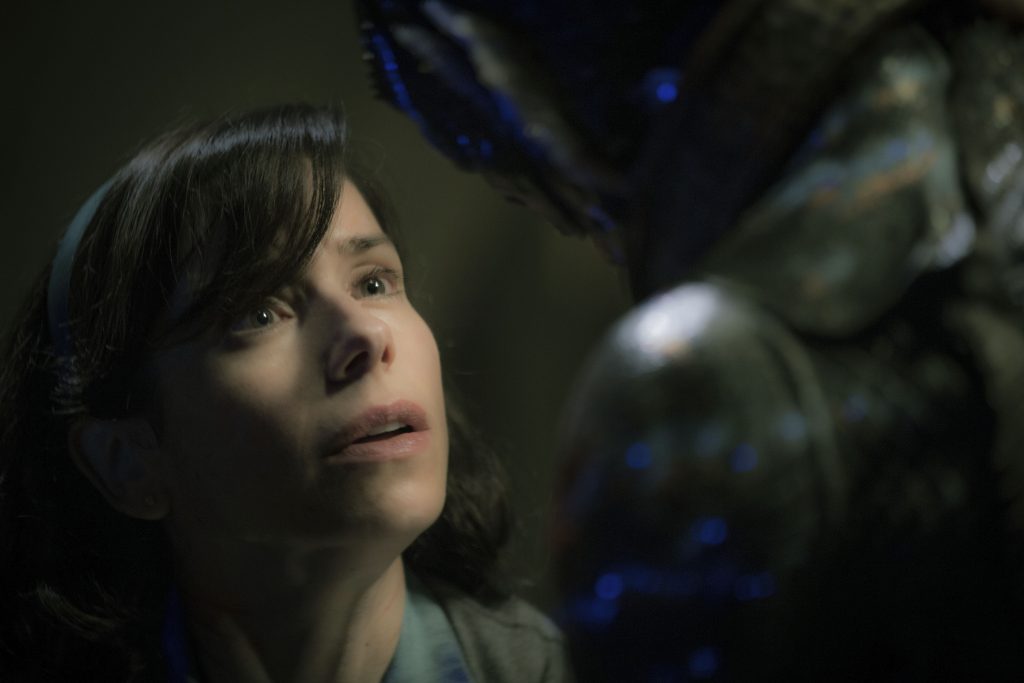Stop me if you’ve heard this one before: A group of powerful men discover a strange beast. They fear it and ultimately want it killed. A shy outcast sees through the rough exterior and learns to love said beast.
It’s not Beauty and the Beast or Swamp Thing, it’s The Shape of Water, nominated for 13 Academy Awards, one shy of the all-time record set by Titanic, La La Land and All About Eve.
This movie has been highly praised for being imaginative, yet I couldn’t help thinking of so many other movies the whole time I was watching it at Red River Theatres, which will continue to screen the Oscars front-runner through Thursday.
The general premise is that, during the Cold War era of the early 1960s, the U.S. government discovers this man-like water beast (which looks a lot like Swamp Thing or the Creature From the Black Lagoon) in the Amazon River and takes it to a secret facility in Maryland to examine it. While all the government officials describe the creature as though it’s a dangerous monster, mute janitor Elisa – who seemingly has no relationships in life except with her much older neighbor, Giles, and who, inexplicably, has plenty of access to this top-secret room where the beast is stored – is mysteriously drawn to him. Soon enough, she falls in love with the thing, which is of course against what society feels is right.
While Beauty and the Beast immediately comes to mind, the theme of a scary-looking being having a heart of gold and an unassuming, cute girl seeing that inner beauty has to be one of the oldest themes there is. We get the moral of the story – true beauty is on the inside, don’t listen to society, follow your heart, humanity is an abstract concept, etc.
This isn’t to say The Shape of Water is a bad movie – far from it. I found it enjoyable all the way through, but I just kept getting hung up on similarities to other works of fiction from the past.
For instance, a good chunk of the movie revolves around Elisa trying to break the creature out of the facility so she can set him free in the ocean (even though he came from a freshwater river). In other words, it’s Free Willy.
Another element of the story, not revealed until about the halfway point or a little later, revolves around some interesting abilities of the amphibious creature. Without giving away too much, some characteristics are very similar to elements used in The Green Mile (if you’ve seen that movie or read the book, this hint may give a little bit away).
Apart from the striking similarities to some other works, this movie also had some odd secondary plotlines that were never really paid off or explained, making me wonder why such scenes were included.
For example, one of the head government agents at the facility, Strickland, who serves as the main antagonist, is revealed to have a certain fetish, if you will. In a sex scene with him and his wife, he covers her mouth and tells her he wants her silent. There’s a scene later in which he interviews Elisa – who, again, doesn’t speak in this movie – where this fetish is sort of alluded to again, but nothing ever comes of it, and there are no tense events or situations that ever arise from it.
Another hang-up I had was why the cleaning staff had such casual access to the room housing what one official describes as the most sensitive asset the facility had ever housed.
There’s also a lot going on with the color green in this movie – Strickland is always eating green hard candies, he buys a greenish Cadillac (another “why?” moment), artist Giles works on an advertising poster that the boss says needs to be more green, the beast needs green flakes of protein in his tank, Giles keeps slices of green key lime pie in his fridge.
Green symbolizes a lot of things in our society – money, envy, environment, being inexperienced – but I couldn’t make sense of what Oscar-nominated director Guillermo del Toro was trying to do with it here.
The film also begs for a change of scenery. We’re in either the government lab (no windows) or Elisa or Giles’s apartments virtually the whole time, and it’s generally pretty dark, wet and dreary throughout.
On the positive side, the acting is superb – lead woman Sally Hawkins as Elisa does an incredible job conveying emotions without words (she does use sign language). Michael Shannon (Strickland) executes the government bad-guy role to a T. And supporting actress Octavia Spencer as Elisa’s friend and fellow janitor, Zelda, adds some much-needed charm and humor.
I wouldn’t take the kids to this one, as there’s a surprisingly high content of nudity and sexuality (as well as violence, gore and language), but I’d recommend it to any adult who doesn’t mind a familiar storyline.









